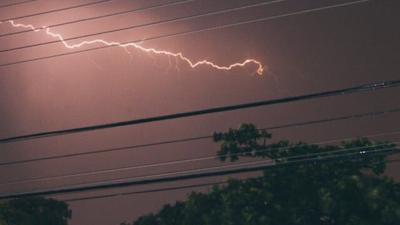
In arboriculture, understanding the potential dangers posed by lightning strikes on trees is paramount. Lightning strikes not only threaten the tree itself but can also lead to property damage, injury, or even loss of life.
Implementing the tree lightning protection systems is an efficient way to mitigate these risks and ensure the safety of people and property. This listicle serves as a comprehensive guide to understanding its importance and the essential components involved in its installation.
The Threat of Lightning Strikes
Trees, with their towering presence and expansive canopy, are particularly vulnerable to lightning strikes. When lightning strikes a tree, the energy can travel through its conductive tissues, causing internal damage and potentially leading to catastrophic consequences such as tree collapse or fire. Additionally, nearby structures, vehicles, or people can also be affected by the intense heat and electrical currents generated by the lightning strike.
Components of Lightning Protection Systems
These protection systems consist of several key components designed to safely dissipate the electrical energy from a lightning strike. These components typically include lightning rods, grounding systems, and conductive cables. Lightning rods, also known as air terminals, are installed at the highest points of the tree to attract lightning strikes and offer a path for the electrical current to travel safely to the ground. Grounding systems, comprised of copper or other conductive materials, are buried underground to disperse the electrical energy harmlessly into the soil. Conductive cables connect the lightning rods to the grounding system, completing the circuit and ensuring the safe passage of electrical currents.
Installation Process
Proper setup of a lightning protection system is critical to its performance. The process begins with a detailed examination of the tree's structure and surrounding environment to determine the most suitable placement for lightning rods and grounding systems. Installation should be carried out by experienced arborists who are knowledgeable about the principles of lightning protection and adhere to industry best practices. Special care should be taken to ensure that all components are securely attached to the tree and properly grounded to minimize the risk of failure during a lightning strike.
Maintenance and Inspection
Once installed, these systems require regular maintenance and inspection to ensure continued effectiveness. This includes periodic checks to make sure that all components are intact and free from damage, corrosion, or degradation. Any signs of wear or damage should be promptly addressed to prevent potential failure during a lightning strike. Additionally, trees should be pruned regularly to remove dead or overhanging branches that could pose a risk of falling or becoming conductive pathways for lightning.
Benefits of Lightning Protection Systems
The benefits of implementing these systems are manifold. Not only do they reduce the risk of property damage and personal injury caused by lightning strikes, but they also help preserve the health and longevity of valuable trees. By creating a safe pathway for electrical currents to disperse, lightning protection systems can prevent internal damage to the tree's structure and reduce the likelihood of fire or collapse. Furthermore, its presence can provide peace of mind to property owners and occupants, knowing that measures have been taken to mitigate the risks associated with lightning strikes.
Understanding and implementing the tree lightning protection systems is essential for ensuring the safety of both people and property in areas prone to thunderstorms. By installing and maintaining effective systems, property owners can reduce the risk of damage caused by lightning strikes and preserve the beauty and value of their trees for years to come.
.
Reference Article:


(0) comments
We welcome your comments
Log In
Post a comment as Guest
Keep it Clean. Please avoid obscene, vulgar, lewd, racist or sexually-oriented language.
PLEASE TURN OFF YOUR CAPS LOCK.
Don't Threaten. Threats of harming another person will not be tolerated.
Be Truthful. Don't knowingly lie about anyone or anything.
Be Nice. No racism, sexism or any sort of -ism that is degrading to another person.
Be Proactive. Use the 'Report' link on each comment to let us know of abusive posts.
Share with Us. We'd love to hear eyewitness accounts, the history behind an article.